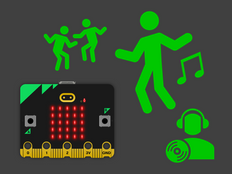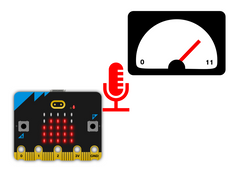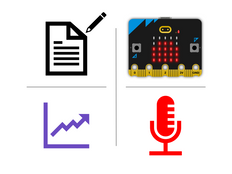Step 1: Make it
What is it?
Measure how long applause - or any loud sound - lasts with this timer that uses the microphone on the new micro:bit.
Introduction
Coding guide
What you'll learn
- How to trigger events when loud and quiet sound measurements are made by the microphone
- How to use the micro:bit's built-in timer
- How to set the threshold for loud and quiet events
How it works
- At the start of the program the threshold for triggering a loud sound event is set. Use bigger numbers so louder sounds are needed, smaller number for smaller sounds. You can use any number from 0 to 255.
- A variable called start is set to 0. This is used for tracking when the loud sound began.
- When the microphone detects a loud sound, the start variable is then set to the micro:bit's current running time and an icon is shown on the LED display so you know the timer has started.
- Running time is a measure of how long your micro:bit has been running your program in milliseconds (thousandths of a second).
- When the loud sound stops, a quiet sound event is triggered.
- If there has already been a loud event, and the timer has started, the start variable will have a value greater (>) 0. In this case a variable called time is set to the new current running time minus the start time. This tells us how long the loud sound lasted.
- Because the time is measured in milliseconds, the program divides it by 1000 to convert it to seconds and displays it on the LED display.
What you need
- A micro:bit
- MakeCode or Python editor
- battery pack (optional)
Step 2: Code it
1from microbit import *
2microphone.set_threshold(SoundEvent.LOUD, 150)
3start = 0
4
5while True:
6 if microphone.was_event(SoundEvent.LOUD):
7 start = running_time()
8 display.show(Image.TARGET)
9
10 if microphone.was_event(SoundEvent.QUIET):
11 if start > 0:
12 time = running_time() - start
13 start = 0
14 display.clear()
15 sleep(100)
16 display.scroll(time / 1000)Step 3: Improve it
- Experiment with different thresholds for loud and quiet sound events to find the values that work best for you.
- Add code from the Sound logger project so you can also measure how loud the applause was.
This content is published under a Creative Commons Attribution-ShareAlike 4.0 International (CC BY-SA 4.0) licence.


